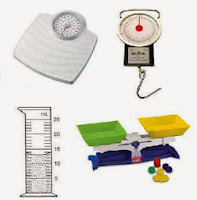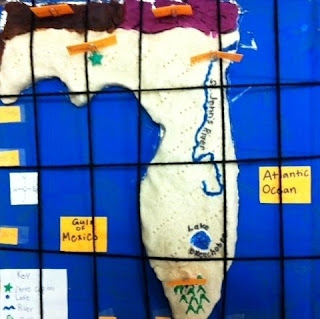
Each student also implemented the Scientific Method through our extensive Bouncing Ball Lab which was featured recently at Open House.
With all of this background knowledge to guide us, the time has come to begin exploring a specific topic in depth. Our first topic to explore is MATTER (Chapter 4 in our Interactive Science Textbooks).
 COLOR, SHAPE, TEXTURE, ODOR, SIZE, TASTE- these are all OBSERVABLE properties of matter.
COLOR, SHAPE, TEXTURE, ODOR, SIZE, TASTE- these are all OBSERVABLE properties of matter.
The apple is red, rounded, smooth, small and sweet.
 We identify observable properties of matter using our 5 senses.
We identify observable properties of matter using our 5 senses.Seems simple enough, right?
Well, there are also properties of matter than can be MEASURED.
This is where the real scientific fun comes in.
 We can measure an object's:
We can measure an object's: *weight *mass *volume *density
We can also experiment to see if an object has magnetic properties.
In order to understand these measurable properties, we will complete two "Gizmos" in class (virtual labs).
 |
| explorelearning.com |
 We will also calculate the weight, mass, volume, and density of objects in the classroom using real scientific tools.
We will also calculate the weight, mass, volume, and density of objects in the classroom using real scientific tools. As an extension, we will also visit this fun site to learn about how our body weights would vary if we visited the moon and other planets in our Solar System. Check it out! Weight Calculator
To reinforce what we are learning in class, students should reference Chapter 4, lessons 1-3.
Students have their science chapter in their GREEN science folders. They can also review the chapter using our online textbook resource: Online Science Textbook. This is a great way to review because this site offers video clips, vocabulary practice, and self-assessments!!!! Fun, fun, fun!!
To earn Behavior Bucks, students (and parents) can leave a comment to tell about an object at home and 4 physical properties to describe the object. (Students- remember to leave your first name only with your comment.)
Love,
















